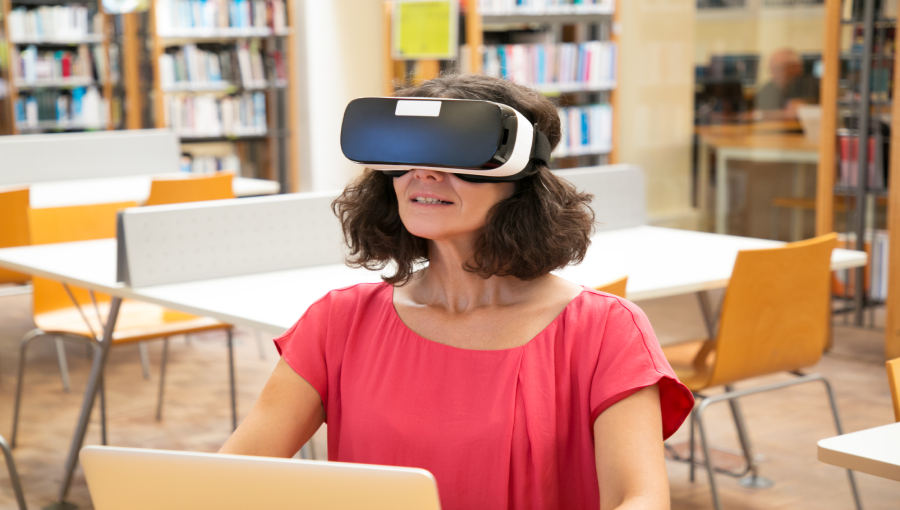A bunch of students stares over their welding helmets' thick visors. They examine each tool required to complete the weld that is put out in front of them. A pupil hits the plate many times, and the torch flashes to life. Their visor darkens to resemble the mask that protects their eyes from the intense flame. They begin welding.
For several high school welding students, this is a very normal experience. Except that none of it is true in this classroom.
An Introduction To Educational and Virtual Reality Welding (EVRW)
Luke Spartalis, a master's student at ECU and a high school teacher, developed the Educational and Virtual Reality Welding (EVRW) curriculum. It uses virtual reality (or VR) to pique students' interest in the profession and teach them the fundamentals.
The COVID-19 pandemic prompted many instructors to expand access to external learning possibilities. Luke's virtual reality welding program might be employed in the event of another epidemic. However, it is a more cheap alternative for students in distant and isolated places to learn to weld in the meantime.
EVRW is compatible with the Oculus Quest headset. Each gadget costs around $450 plus $650, and schools may purchase upgrades and maintenance via Luke's software. This implies that a few hundred dollars may be used to establish a small class to teach the fundamentals of welding. That is much less than the thousands of dollars necessary to create and equip a single vocational or STEM topic classroom.
See also: Anonymous bidder pays $28 million for space flight with Jeff Bezos
Maintaining The Flame
According to research, the immersive quality of virtual reality may boost learning results by actively engaging pupils. According to Luke, an effective virtual reality program strikes a balance between providing pupils with enough engagement to keep them engaged and on task.
"If you include too many things, children may get distracted," he explains. "Virtual reality is an excellent tool for immersing children and capturing their focus, but if you include too much, they will lose concentration on what they are doing."
"You cannot accuse them; they are in a very engrossing new place. It is better to maintain everything manageable."
Luke's software simulates the genuine thing via the use of virtual reality haptics (the transmission and comprehension of information through three-dimensional touch). For instance, users may feel the 'kickback' associated with welding.
Creating a Wave of Interest
Luke was named the winner of the INCITE Awards' Research and Innovation (Student) Project of the Year last year. The awards honor technological inventors.
Luke also presented his software at Perth's 2018 Resources Technology Showcase. It generated interest in creating professional training tools after receiving a favorable response from professional welders.
While this extends beyond the boundaries of Luke's initial concept, companies might use Luke's software to teach more complex welding methods, including marine welding, to their employees before they encounter them on the job. VR is already being used in this manner to teach surgeons.
"The goal of this is not to substitute instructors or anything of the kind. It's simply an additional tool in their toolbox to aid in learning," Luke explains.
Luke reports that a number of institutions have shown interest in his curriculum and have requested that he expand it to include more forms of welding. He's adding dexterity assessments for injury healing and a chemical lab session to his virtual reality classes.
Featured image: People photo created by pch.vector - www.freepik.com
Subscribe to Whitepapers.online to learn about new updates and changes made by tech giants that affect health, marketing, business, and other fields. Also, if you like our content, please share on social media platforms like Facebook, WhatsApp, Twitter, and more.

